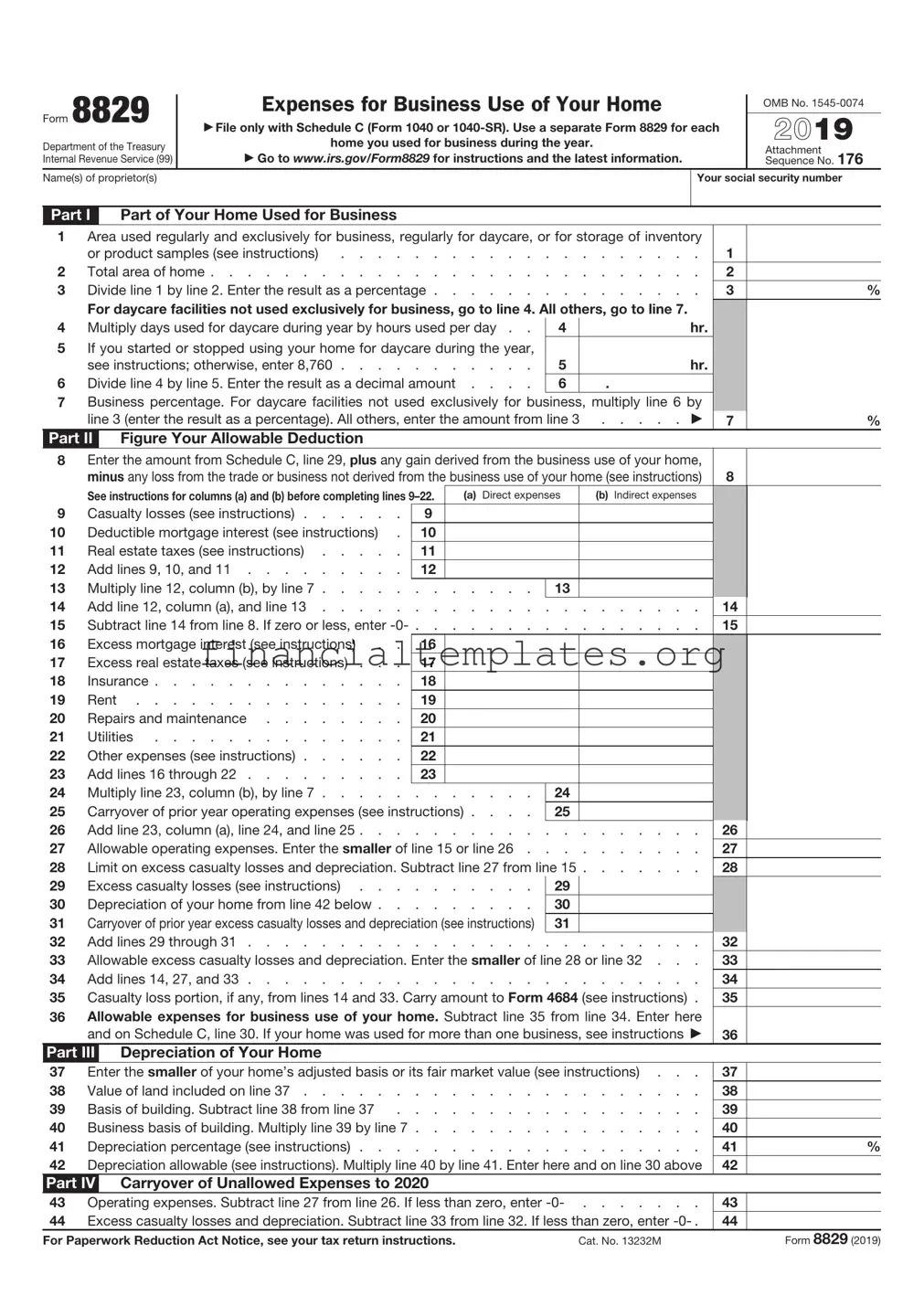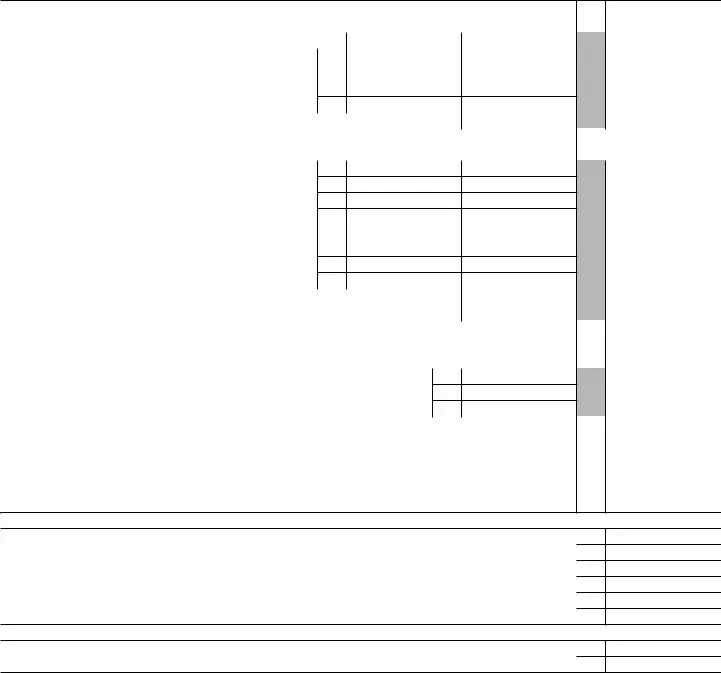The IRS 8829 form is used for Expenses for Business Use of Your Home. It's quite unique but shares similarities with several other IRS forms and documents related to business and personal financial management. Understanding these similarities helps to navigate the complexities of tax preparations and financial declarations.
The Schedule C (Form 1040) or "Profit or Loss From Business" is notably similar to the IRS 8829 form. Both are pivotal for self-employed individuals or small business owners aiming to report their business income and expenses. While the IRS 8829 focuses on home office deductions, Schedule C encompasses the broader spectrum of business-related financial activities. They complement each other in tax filings where home office deductions are part of the business expenses.
Similarly, the Schedule E (Form 1040), "Supplemental Income and Loss," also bears resemblance. This form is utilized for reporting income from rental real estate, royalties, partnerships, S corporations, trusts, and more. Like the IRS 8829, it deals with deductions pertinent to the operation of these income-generating activities, albeit in different realms. Both forms ensure taxpayers account for and deduct expenses appropriately to reduce taxable income.
The Schedule SE (Form 1040), "Self-Employment Tax," is akin to IRS 8829 in that both affect self-employed individuals. Where IRS 8829 helps reduce taxable income through home office deductions, Schedule SE calculates the amount owed for self-employment tax, showing the interplay between income deductions and tax responsibilities for the self-employed.
The Form 4562, "Depreciation and Amortization," shares common ground with IRS 8829 through its focus on deductions. While IRS 8829 enables deductions for business use of a home, Form 4562 is utilized for depreciation and amortization deductions on business assets. Both forms serve to lower taxable income by accounting for the costs associated with business operations.
The Form 2106, "Employee Business Expenses," is akin to IRS 8829 for individuals who incur business expenses while employed. Though IRS 8829 is designed for business use of one's home, both forms cater to the documentation of work-related expenses. However, Form 2106 is specific to employees rather than self-employed individuals or entrepreneurs.
The Form 1040-ES, "Estimated Tax for Individuals," while not directly about deductions, relates to IRS 8829 in the broader context of tax planning and payments. Users of IRS 8829 might also need to file Form 1040-ES if their home business adjustments lead to a significant change in their tax obligations, necessitating adjusted quarterly estimated tax payments.
The Form W-9, "Request for Taxpayer Identification Number and Certification," interconnects with the IRS 8829 indirectly. Freelancers or independent contractors who deduct home office expenses on IRS 8829 often provide a W-9 to their clients for tax reporting purposes. Both forms are staples in the financial toolkit of independent professionals managing their tax responsibilities.
Lastly, the Form 1099-MISC, "Miscellaneous Income," often complements the IRS 8829 for those receiving income outside of traditional employment. This form reports incomes such as rents, royalties, and non-employee compensation. Users filing IRS 8829 for home office deductions may also deal with Form 1099-MISC when reporting diverse sources of income, emphasizing the multifaceted aspects of personal and business finances.

